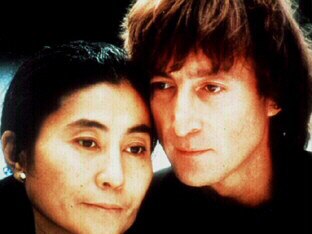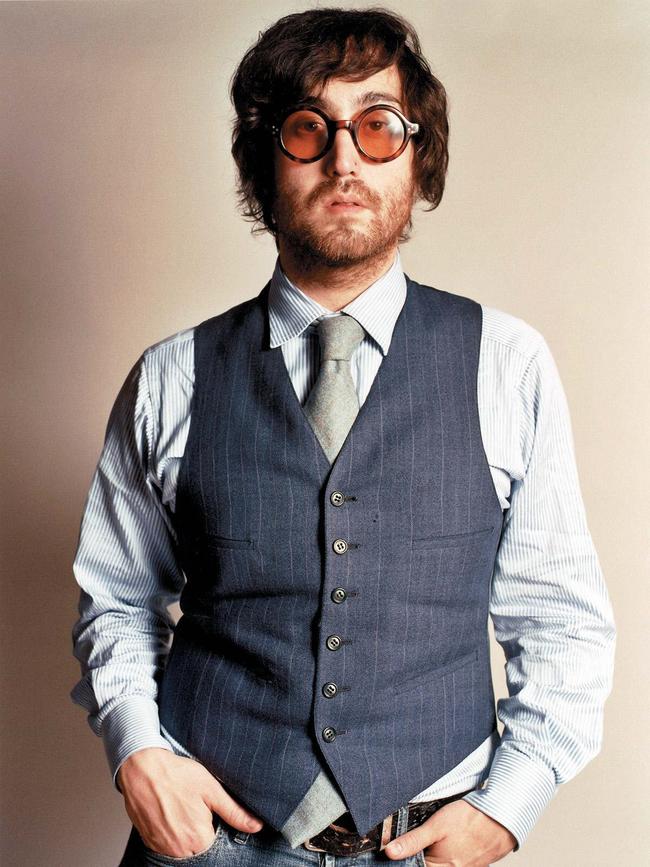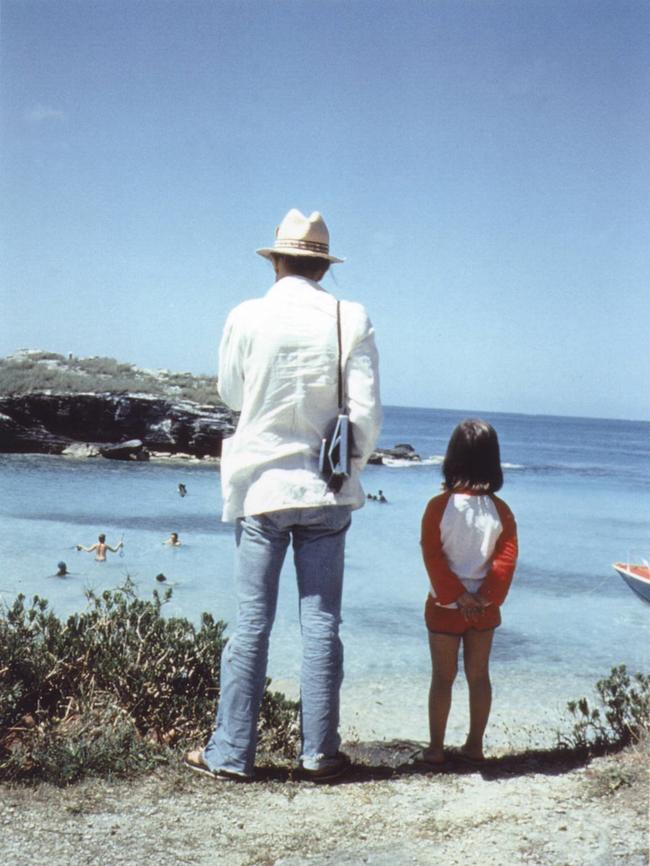Listening in on John Lennon – the tapes that reveal the star’s real life
Not just ‘another Beatles film’, a new documentary looks at John Lennon and Yoko Ono, and their post-Beatles life in America.

In the 18 months between leaving England for New York in August 1971 and their fateful move to the Dakota building on the Upper West Side in 1973, John Lennon and Yoko Ono lived in a small apartment at 105 Bank Street in Greenwich Village.
It was there, lying with his wife in a bed made from a church pew, that Lennon, still only 31, came to terms with no longer being a Beatle. “I can’t believe I’m speaking to a myth,” a caller on a New York radio phone-in told the singer at the time. “Myth World or Myth Universe?” Lennon shot back.
“I’ve been wondering exactly how the Beatles are as people,” another caller said. “Well, the Beatles don’t exist any more,” Lennon said. “I don’t wanna recreate the past. I wanna be me now.”
Moments like those fill One to One: John & Yoko, the documentary by Kevin Macdonald, an intimate, moving and artistically fresh film on a subject that had seemingly been picked clean. “Is there any room for another Beatles film?” is the question Macdonald asked himself when he was invited to make a documentary about the couple. He had been offered access to restored footage of Lennon’s One to One concert at Madison Square Garden in 1972 – the last full-length show he played.
Yet the Scottish director – who redefined the dramatic possibilities of documentary in 1999 with the Oscar-winning One Day in September, his riveting account of the massacre at the 1972 Munich Olympics – isn’t the sort to settle for making a bog-standard concert movie. Even one featuring Lennon, Stevie Wonder and Roberta Flack.
“The only way was to do something different,” Macdonald says. “You can’t just have the same old white men reminiscing about the time they met John in Greenwich Village.” He hit on a brilliant solution. The period depicted in the film, the intertitles tell us, was one when Lennon and Ono were “mixing with artists and political radicals … and watching a lot of TV”.
That new circle included poet Allen Ginsberg and activist Jerry Rubin, but it was the TV that gave Macdonald his stroke of inspiration, letting him build his film as a kaleidoscopic collage of what the couple might have seen on the box.
The rise and fall of Richard Nixon, protests against the Vietnam War, neglected mentally disabled children at Willowbrook State School in New York and adverts for pasta sauce are intercut with moments from the concert and previously unheard telephone interviews.

Worried his phone had been bugged by the American authorities – and that proved to be the case – Lennon recorded his phone conversations, 25 hours of which were handed over to Macdonald by Lennon’s estate. “I feel like a student again,” Lennon says in one exchange, and living in the apartment must have felt like that compared with Tittenhurst Park, his mansion in Berkshire.
Some of the conversations have a comic surrealism, such as Ono’s assistants’ epic quest to obtain hundreds of living flies for one of her art pieces. Elsewhere the lack of grandness is striking. Lennon gets through to someone’s receptionist and asks: “Will you tell him John Lennon called?” She says: “Can you spell that?”
A thrill for Macdonald was presenting the One to One concert in its full glory, the sound remastered by Sean Lennon, the son of John and Yoko. The initial response to it had been “really bad”, the director says. “That was a big shock to Lennon and that’s why he didn’t do it again. Phil Spector was in charge of the sound in the auditorium and the sound for the recording, and he totally f..ked both up.”
Macdonald pitched the film to Sean Lennon, who had taken over control of the family estate from his mother, who is 92. “Sean said, ‘That sounds like something my mum would like: an art piece’.” The allusive documentaries of Adam Curtis were a touchstone.

An elegant 57, Macdonald comes from filmmaking stock – his grandfather was Emeric Pressburger, who with Michael Powell directed such classics as The Red Shoes and A Matter of Life and Death, and his brother is Andrew Macdonald, producer of Trainspotting and 28 Days Later. We are talking in Macdonald’s office at 3 Mills Studios in East London, where he is in preproduction for his next film, The Runner, starring Gal Gadot.
“It’s unlike anything I’ve done before,” he says. “A mainstream thriller a bit like Speed – a woman has to run across London and can’t stop or somebody’s going to kill her child.” Macdonald, who was educated at Oxford, is one of the few directors to move with success between documentary and drama. He made his name in documentaries with One Day in September and the BAFTA-winning Touching the Void (2003), his extraordinary account of a mountaineering disaster, before segueing to fiction with The Last King of Scotland (2006), for which Forest Whitaker won an Oscar for playing Idi Amin.
While making the Lennon-Ono film, Macdonald was struck by the parallels between the early ’70s and today. “An attempted assassination of a populist politician (presidential candidate George Wallace), the first black woman presidential candidate (Shirley Chisholm), Gaza, the first era of environmentalism. It was like, ‘Oh my God, we’re living through some kind of shadow of that period’.”
Macdonald has experience with musical icons, having made documentaries on Bob Marley, Whitney Houston and Mick Jagger, the last of which was taken away from him by Jagger and re-cut. Macdonald had to watch it at a retrospective of his work in Brazil. “It was excruciatingly embarrassing. Every documentary since then I’ve had control over the cut, including this one.”

Sean Lennon proved more amenable. “He is incredibly conscious of the importance of his parents’ work, but I don’t think he really enjoys being the guardian of their legacy,” Macdonald says. This film, though, was an easy sell. “It’s not talking about affairs and drugs; it’s them through their own words, so there’s little to get upset about. Sean said he’d shown it to Yoko and that she liked it.”
It helped that the film views events from her perspective as well as Lennon’s. “It becomes about how difficult it was to be married to him,” Macdonald says. “She’s trying to say something and he often cuts her off.” “Yoko, take your legs out of bed,” Lennon snaps at her during one TV interview at their apartment.
Ono’s reflections from that time are poignant. “I was considered a bitch; since I met John I was upgraded into a witch,” she tells one interviewer. “Some of (John’s) closest friends told me I should stay in the background. The whole society wished me dead. I started to stutter. I considered myself an eloquent woman, also an attractive woman. And suddenly because I was associated with John I was considered an ugly woman … because I took your monument away from you.”
Even more moving is the rarely told story of Ono’s daughter, Kyoko, from her previous marriage to Anthony Cox, an American film producer and art promoter. After Ono married Lennon, Cox vanished with Kyoko, who was aged eight at the time, changing her name to Ruth Holman and bringing her up in an American Christian cult called the Living Word Fellowship. Ono didn’t see her for 27 years. “I couldn’t bear seeing children,” she says in the film. They were reunited in 1998.

“The theme of the film is children and childhood,” Macdonald says.
“You’ve got John talking about his own difficult childhood and being left with a chip on his shoulder, and you’ve got Yoko.” Hence why the plight of the thousands of children at Willowbrook, many of them with hepatitis and covered in their own faeces, struck such a chord with the couple, who donated the proceeds of the One to One concert to help them.
“These children are almost symbolic of all the pain on Earth,” Lennon says in the film. There was more pain to come, but Macdonald ends on a sweet note with footage of a party for the Willowbrook kids and the birth in 1975 of a baby called Sean.
THE TIMES

To join the conversation, please log in. Don't have an account? Register
Join the conversation, you are commenting as Logout